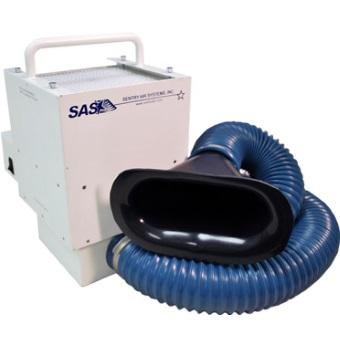Notifications

9 minutes, 27 seconds
-245 Views 0 Comments 0 Likes 0 Reviews

In laboratory environments, safety and air quality are paramount. The presence of hazardous fumes, dust, and particulate matter generated during experiments or industrial processes can pose significant health risks to researchers and technicians. To mitigate these dangers, laboratory smoke extractors, also known as fume extractors, play a critical role. These specialized systems are designed to remove harmful airborne contaminants, ensuring a safe and clean working environment. This blog explores the definition, functionality, types, applications, and importance of laboratory smoke extractors, providing a comprehensive overview in approximately 986 words.
A laboratory smoke extractor is a ventilation system that uses a fan to create a negative draft, pulling fumes, dust, smoke, and other airborne particulates into a filtration system to clean the air. These systems are essential in environments where hazardous substances are produced, such as chemical laboratories, medical research facilities, and industrial workshops. By capturing contaminants at their source, smoke extractors prevent harmful particles from entering the breathing zone of laboratory personnel, thereby protecting their health and maintaining a safe workspace.
The primary function of a smoke extractor is to remove toxic or irritating substances, including chemical vapors, soldering fumes, welding smoke, and biological aerosols. Unlike general ventilation systems, smoke extractors are designed for localized extraction, targeting specific workstations or processes. They often incorporate high-efficiency filters, such as HEPA (High-Efficiency Particulate Air) filters, activated carbon filters, or specialty-blended media, to capture particles as small as 0.3 microns with up to 99.999% efficiency.
Laboratory smoke extractors operate by creating a controlled airflow that draws contaminants into a filtration system. The process begins with a fan that generates negative pressure, pulling air through a hose, arm, or hood positioned near the source of the fumes. The contaminated air then passes through a series of filters designed to trap specific types of pollutants. For example:
After filtration, the purified air is either recirculated back into the laboratory (in ductless systems) or expelled outside through ductwork (in ducted systems). Ductless units are particularly energy-efficient, as they eliminate the need for costly replacement air and extensive ducting. The choice between ducted and ductless systems depends on the laboratory’s requirements, the type of contaminants, and the workspace layout.
Laboratory smoke extractors come in various configurations to suit different applications and workspace constraints. The main types include:
Each type of extractor is tailored to specific laboratory needs, with features like multi-stage filtration, adjustable arms, and easy filter replacement to optimize performance.
Laboratory smoke extractors are used across a wide range of industries and processes, including:
These systems are also critical in cleanrooms, where maintaining air purity is essential to prevent sample contamination. In hospital pharmacies, for example, smoke extractors support aseptic handling by ensuring clean air in laminar airflow cabinets.
The use of laboratory smoke extractors is not only a matter of convenience but also a legal and ethical necessity. Regulatory bodies, such as the Occupational Safety and Health Administration (OSHA), set Permissible Exposure Limits (PELs) for hazardous substances, requiring employers to maintain safe air quality. Failure to comply can result in citations, fines, or health risks to workers.
Smoke extractors also align with the Control of Substances Hazardous to Health (COSHH) Regulations, which mandate risk assessments and engineering controls to minimize exposure to harmful substances. By capturing contaminants at the source, these systems reduce the risk of respiratory issues, skin irritation, and long-term health conditions like asthma or cancer caused by prolonged exposure to fumes.
Additionally, smoke extractors contribute to environmental sustainability by preventing the release of toxic substances into the atmosphere. They enhance laboratory efficiency by reducing downtime caused by health-related absences and improve sample integrity by minimizing airborne contamination.
When selecting a laboratory smoke extractor several factors should be considered:
Laboratory smoke extractors are indispensable tools for maintaining safety, compliance, and efficiency in environments where hazardous fumes and particulates are generated. By effectively capturing and filtering contaminants, these systems protect workers, safeguard the environment, and ensure the integrity of laboratory processes. Whether portable, benchtop, or wall-mounted, the right smoke extractor can make a significant difference in creating a cleaner, healthier workspace. As laboratories continue to evolve, investing in high-quality fume extraction systems remains a critical step toward sustainable and safe scientific progress.

